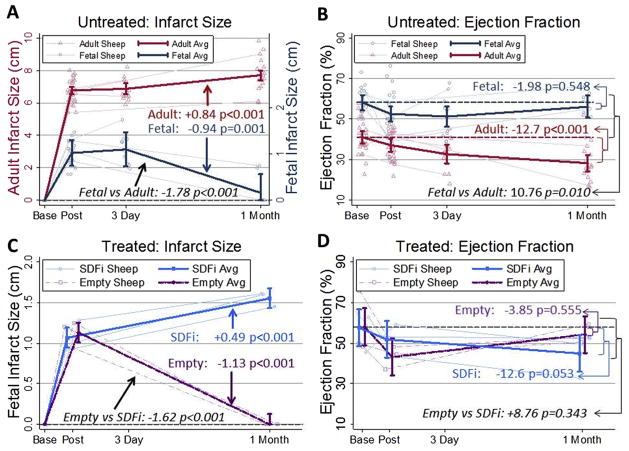Fig 1.
Fetal cardiac function is restored at 1 month after myocardial infarction (MI). Inhibiting stromal-derived factor-1α (SDF-1α) in fetal MI resulted in decreased cardiac function at 1 month after MI similar to the adult. Quantitative echocardiography measurements were obtained at baseline, post-MI, 3 days, and 1 month after MI. Selected individual animal trajectories are displayed in the background (light lines, open circles) with means (95% confidence intervals) in the foreground (heavy lines). (A) Fetal and adult infarct length (IL): average fetal IL decreased by 0.94 cm (p = 0.001) at 1 month, whereas adult IL increased by 0.84 cm (p < 0.001). (B) Fetal and adult ejection fraction (EF): fetal EF returned to near-baseline levels at 1 month (difference of −1.98%, p = 0.548), whereas adult EF was decreased by 12.7% (p < 0.001). (C) Mean IL after empty or mutant SDF-1α transgene (SDFi) treatment was 1.13 cm at 3 days but returned to 0 at 1 month in the empty vector (p < 0.001) but increased by +0.49 cm (p < 0.001) for the SDFi vector. (D) EF in empty or SDFi lentiviral vector–treated fetal infarcts: EF returned to near baseline levels at 1 month for the empty vector (difference of −3.85%, p = 0.555), whereas EF in the SDFi vector was decreased by −12.6% (p = 0.053).

